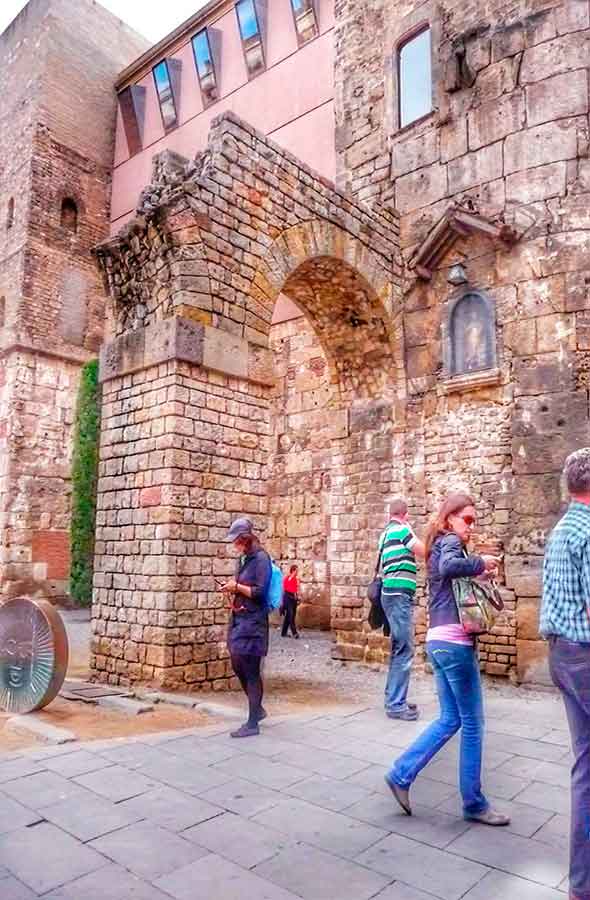

When the Romans settled in Spain and founded Barcino, one of the first important works they did
was to supply water to the city.
This infrastructure was carried out by using water tanks and wells and two
aqueducts that brought the water from the river Bes˛s and from the Collserola mountain. Both
aqueducts got together and converged on the
Roman wall in the Gothic Quarter.

This water was used for domestic use and for public toilets. The used water was expelled to the sea trough a sewage system.
They have not discovered remainders of the first aqueducts system yet.
Remainders of the second system can be seen in
Cathedral Square (a reconstruction was done by the city of Barcelona in the s. XX) near the Roman wall.
At the foot of this Aqueduct, you can see a work of the Catalan artist Joan Brossa:
the sculpture that say “ Barcino ”
the name that was founded the city of Barcelona.
Other remainders recently discovered in 1988 thanks to the demolition of a
building just steps from here: in the street Duran i Bas. This aqueduct is part of the structure of a building that was constructed
several centuries later. It is around 8 meters higher and it is preserved in relatively good condition, considering that it is more than 2000
years old.
Everyday
Plaša Nova, Barcelona (view
map)
Line 3 (Plaša Catalunya) and line 4 (Jaume I)
Not for free but still great: CITY TOUR BARCELONA
On this Guest House, the time stood still and you can relax to plan your day without pressure.
Historical building with cozy rooms for all budgets. Due is not necessary to spend a lot of money to enjoy a good located accommodation.
Good located and cozy Guest House near all the important
point that you would love to visit in Barcelona.
Totally renovated Guest House with all comfort that you would like to have during your stay in Barcelona.
FOLLOW US!